Ethiopian Art – An Exploration of Ancient Ethiopian Art and Culture
Ethiopia: a country landlocked on the African continent between volcanically formed mountains and deserts. Its topography makes it seem inaccessible, and while it did serve as protective measures, the country had to fight continuously throughout the centuries to keep its independence. It is because of its remoteness and independence that Ethiopia’s culture and artistic traditions remained so quintessentially Ethiopian throughout the millennia. Today, Ethiopia is seen as a cultural powerhouse, boasting a vibrant and dynamic art scene. This article explores the ancient Ethiopian arts and culture of Ethiopia and considers how its struggles throughout history shaped its future.
Ancient Ethiopian Art Culture
Ethiopia was initially called the “Kingdom of Aksum”, during its ancient times. Later, during the 13th century C.E., it was called the “Kingdom of Abyssinia”, and while the country used both names “Abyssinia” and “Ethiopia” interchangeably throughout centuries, it is seen to finally have rested on the name “Ethiopia” at the end of the 20th century. For clarity, this article will use the name “Ethiopia” throughout, regardless of period.
Ethiopia has a history that is as substantial as any Western civilization, yet, it has gone largely unnoticed by many. This section aims to scratch at the surface of this ancient and deep-rooted culture.
The Aksumite Era
This era derives its name from the word “Aksum”. Aksum was the name of the capital of Ethiopia where the King was housed. For centuries Aksum symbolized the importance of the ancient Aksumite kingdom, which is estimated to have lasted from the 1st century C.E. until the 8th century C.E. Aksum achieved its greatness mostly thanks to how its location encouraged trade.
Aksum served as a vital participant in trade, thanks to its proximity to Egypt, Meroë, the Nile valley, and its access to the Red Sea. Through port Adulis, Akum provided these African regions access to Rome, China, the Mediterranean, Arabia, and Sri Lanka.

Conversion to Christianity
It is believed that Queen Sheba, who married King Solomon, was born in Ethiopia. The queen bore Solomon a son and established a line of Solomonic Kings who would rule Ethiopia for centuries. It is no wonder that Ethiopia has such strong and ancient Christian roots.
Ethiopia houses some of the oldest and most interesting churches in the world. Many of Ethiopia’s churches are only accessible by a kind of pilgrimage that would take you high up, to the top of mountains. An example of such a church is the pilgrimage site of Lalibela. This church is dated to have been carved out of the Tigray mountains in the 13th century.

Constructions of many of these churches are said to have started in the 1st century C.E., shortly after the emergence of Christianity itself, but archeologists argue that this only happened at the start of the 4th century, when King Ezana (ruled early to mid 4th century) converted to Christianity.
One of these impressive churches is the “Church of Our Lady Mary of Zion” in Aksum, which is believed to house the important original Christian relict, the Ark of the Covenant.
Another such church is the “Church of Saint George”, which is one of eleven rock-hewn churches in Lalibela, carved out of volcanic rock over 600 years with the estimated date of completion being during the early 13th century CE. With such an expansive history, the term “Ethiopian Christian Art” includes an impressive range of paintings, icons, objects, and chalices that have been produced over millennia.
Aksumite Coins
One of the things that mark Ethiopia’s conversion to Christianity so clearly, is its change of design of coins used for trade. During the 4th century C.E., golden coins with the face of the king and religious symbols of the sun and moon started to be replaced with copper coins that contained Christian symbols.
The image below shows coins (dated to be created during the 6th century C.E.) with the face of King Joel on the front, and a large cross on the reverse.

The Imposing Ethiopian Sculptures of the Aksumites
The obelisks in Aksum are some of the most impressive structures still standing from the ancient era and can easily be compared to the significance of the structures of Pompei. These monumental stone structures are at once sculptural and elaborate artworks, and remarkably ambitious engineering.
The ancient structures are proof that some civilizations in Africa were much older than the European nations, who came to colonize the continent many centuries later.

In the heart of Aksum stands a 24-meter granite megalith, surrounded by several smaller ones. This obelisk was built during emperor Ezana’s rule in the 4th century and weighs 160 tons! This megalith stood in place for over a thousand years but was stolen by the Italians in the 1930s during the Italian occupation of Ethiopia. The obelisk had to be partially dismantled and it took over two years to relocate it to Rome.
This sacred artifact was kept in Rome for nearly 90 years and after continued pressure from Ethiopia and the United Nations, it was finally returned in 2008 to its home. This return of the obelisk has set the example for many other countries to return stolen artifacts that were taken during the war to their rightful place.
The Iconic Christian Painting Style
Many of the Ethiopian paintings and artifacts found in Ethiopia from around the 14th century represent Biblical icons that are reminiscent of those seen in Western Art, and yet, these icons seem to be quintessentially Ethiopian.
These paintings can be seen in murals of many churches, and in small artifacts that were mostly worn around the necks of nobles. The image below shows an example of such a mural.
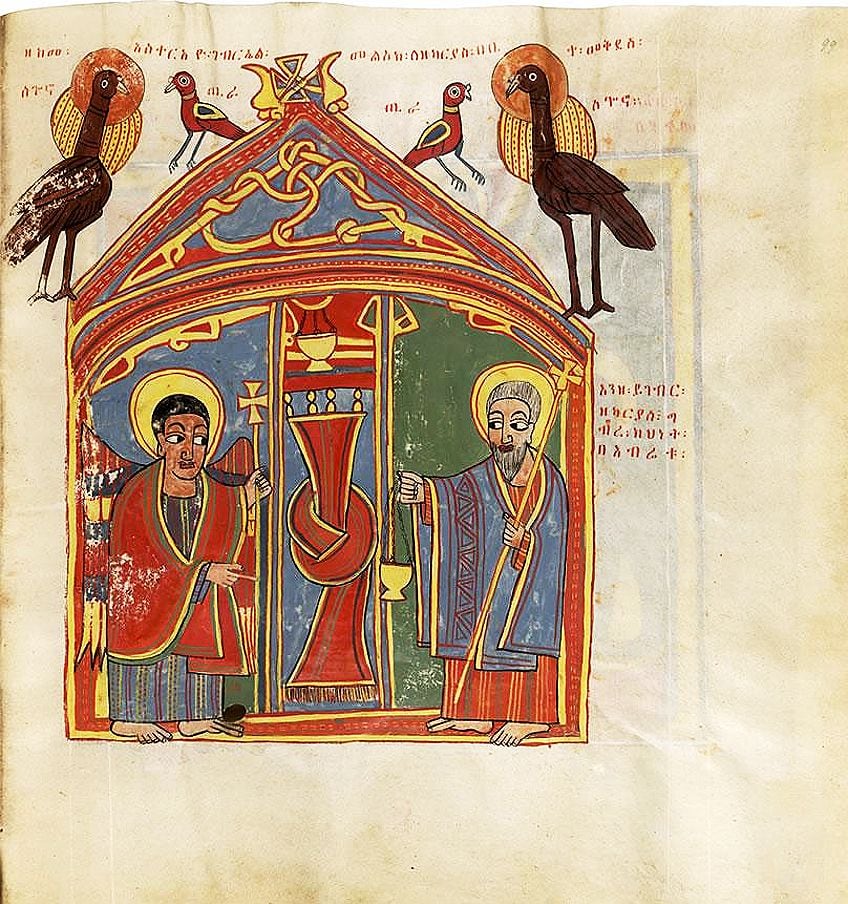
These paintings are both conceptual and iconic. The biblical icons are painted in vivid colors, with wide, cartoon-like eyes, symbolizing that we are not only looking at the icons, but they are also looking back at us.
During the 17th century, double-sided diptychs and triptychs became widespread, and pendants that could fold open like a small book were popular with the nobility.
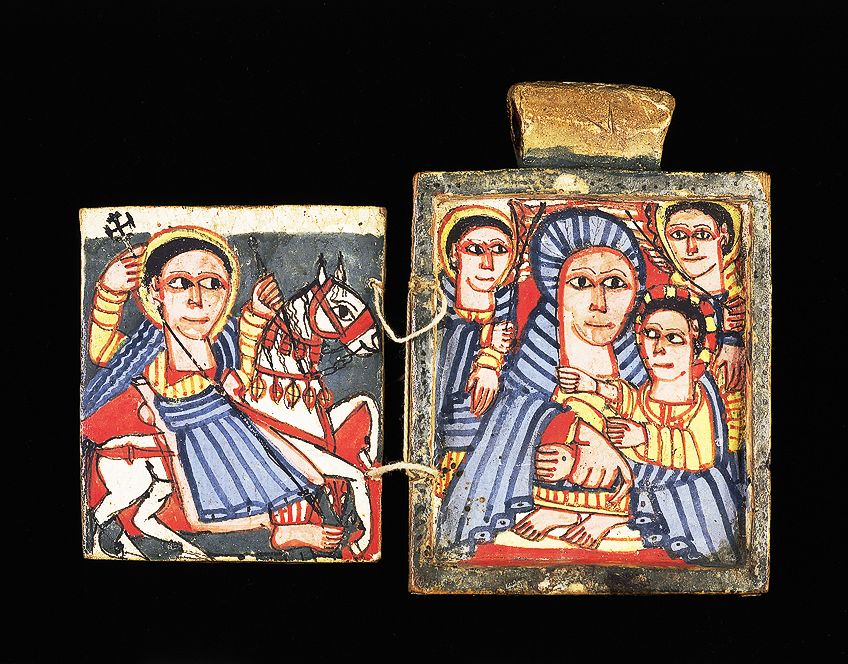
The above image is an example of such a pendant. Again, we see the iconic use of color and the cartoon-like style of the figures. On the one side, we see the Virgin Mary, a religious icon that would only increase in popularity during the 18th century. Mary is holding the child Jesus and is surrounded by angels holding swords. On the other panel, Saint George is slaying a dragon whilst on horseback.
Modern Ethiopia
Around the world, modern Ethiopia of the 19th and 20th centuries is seen as a symbol of African defiance and independence. Whilst most countries in Africa were colonized during this period, Ethiopia was never truly colonized by other countries. This, however, was not for the lack of trying.
The 19th and 20th centuries contain decades of Ethiopia’s most trying struggles due to the invasion of want-to-be colonizers.
Ethiopia’s Struggle for Independence: 1968 and 1896
Some of these attacks include the British invasion of Ethiopia in 1868, which resulted in their then Emperor Tewodros II (also called Theodore), committing suicide rather than being captured by the British Empire. Soon after, Egypt invaded Ethiopia intending to broaden its borders to include the entire Nile River.
The Ethiopian-Egyptian War took place from 1874 to 1876, and Ethiopia, who worked hard on modernizing their military since the British invasion, was able to beat Egypt and retain their territory.

It is however the first Italo-Ethiopian War that spanned from 1894 until 1896, which would be the most impressive and defining war for modern Ethiopia. This was during the scramble for Africa and the expectation was that the Italian forces, whose military equipment made the Ethiopians seem primitive, would easily defeat the Ethiopians.
The Ethiopians, then under the reign of Menelik II, against all odds, managed to defeat the Italians in the Battle of Adwa. This battle would leave the Italians red-faced with embarrassment, while setting and stirring a vision of hope and independence for the rest of Africa.
Emperor Haile Selassie I and the Second Italian Invasion
Whilst this embarrassment held European colonizers off for a moment, Ethiopia’s struggle for independence in the 20th century coincided with the rule of the controversial figure and Solomonic King, Emperor Haile Selassie.
Emperor Haile Selassie I, originally called Ras Tafari Makonnen before his coronation in 1930, would become one of the most recognizable and flawed figures in African history.
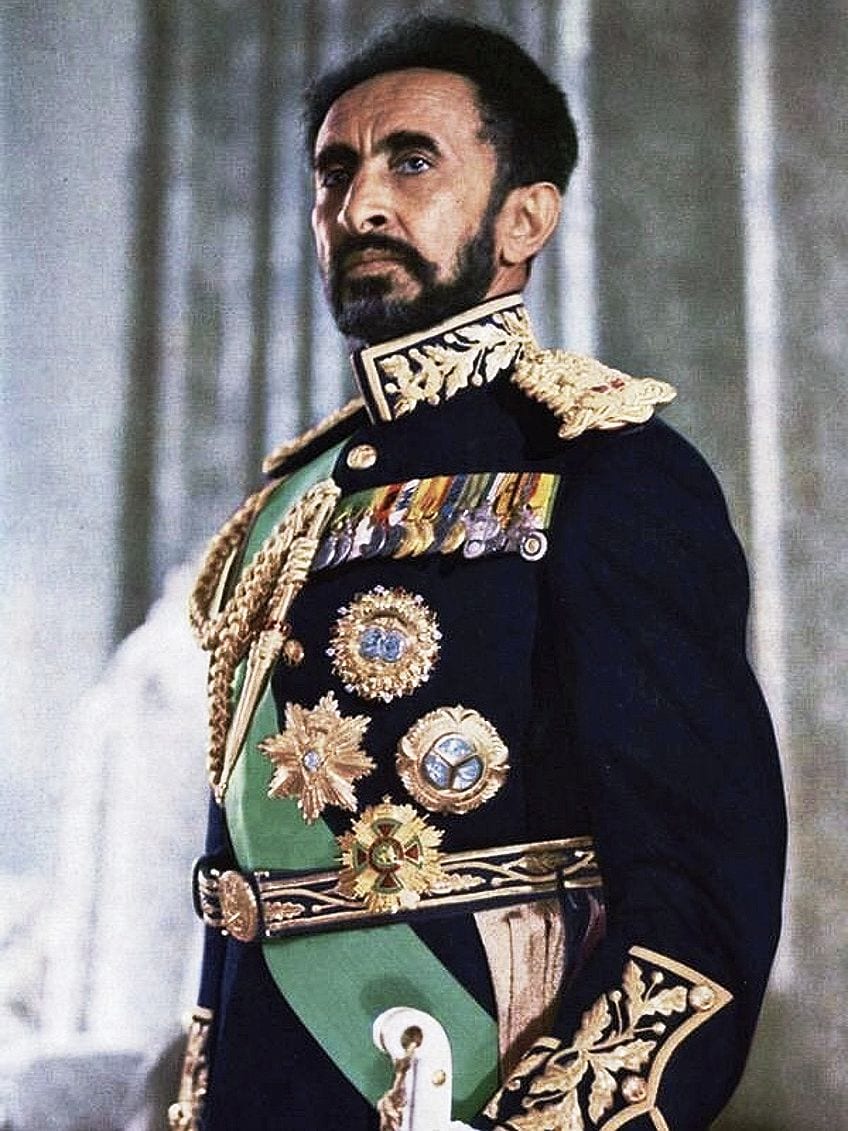
Emperor Haile Selassie ruled during the most challenging periods of the 20th century, including two world wars, invasion, revolution, dramatic technological advancement, and rapid globalization. His reign started well, but it quickly took a turn for the worst when the Italian dictator, Benito Mussolini, decided to invade Ethiopia again in 1935 in an attempt to regain its honor after the embarrassing Battle of Adwa.
Mussolini sent an overwhelming force to Ethiopia, including half a million soldiers, 600 airplanes, and 800 tanks.
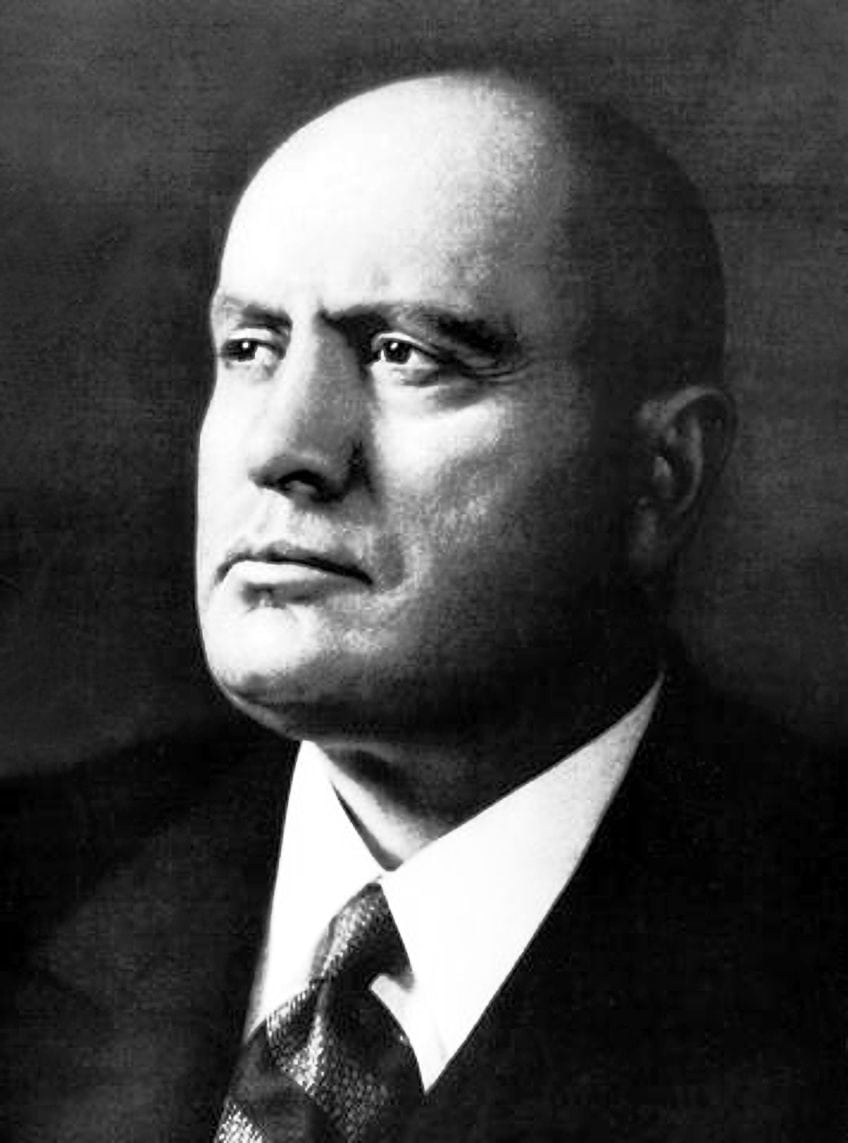
Haile Selassie was exiled during the war and returned after the Ethiopians won the war, leaving the Italians yet again ashamed. The highly acclaimed 2019 novel, The Shadow King, written by Ethiopian-American writer, Maaza Mengiste, focuses on the Second Italo-Ethiopian War that finally ended Italian occupation and reaffirmed Ethiopia’s long-standing independence.
Emperor Haile Selassie I and the Quest for Modernization
After the war, Selassie set out on the challenging mission of modernizing Ethiopia. During this time, the emperor sponsored modern artists and architects to train abroad and to help show the world a new image of modern Ethiopia.
One of these artists, Afewerk Tekle, would go on to be one of Ethiopia’s most acclaimed artists of the 20th century.
Afgewerk Tekle (1932 – 2012)
Afgewerk Tekle was one of Ethiopia’s most renowned artists. He was well known for his African Christian imagery and worked in various mediums, including the painting of murals, mosaics, and public Ethiopian sculptures.

The Total Liberation of Africa (1961), a 150-square-meter stained-glass window triptych, is arguably his most impressive and celebrated work. The work is enjoyed by many for its positive message of Africa’s complete liberation.
The work was created in the 1960s in an expressionist style that references the vivid colors of the early Ethiopian Christian paintings and murals.
The first scene in the triptych depicts the colonial oppression of Africa. The image shows the angel of death and the serpent of evil. This first panel represents Africa’s dark past under colonization. The middle panel is symbolic of Africa’s liberation. This liberation movement is led by Ethiopia, which is carrying the torch of enlightenment. The final panel symbolizes the future of Africa, it represents Africa that is finally slaying the evil that has overcome them.
This panel shows the total liberation of Africa, which is both a physical liberation and liberation of the mind.
The End of Imperialist Ethiopia
Tension started to rise between the 1960s and 1970s in Ethiopia as more and more people began to question the rule of Haile Selassie. The country was struggling with food security as drought and famine terrorized the people of Ethiopia.
The emperor tried to keep the struggles of his people outside of the world’s view and even tried to keep the people living in Addis Ababa from realizing the realities transpiring outside the capital’s borders. Images of starving children were destroyed and hidden, and the voices of journalists and artists were severely suppressed.
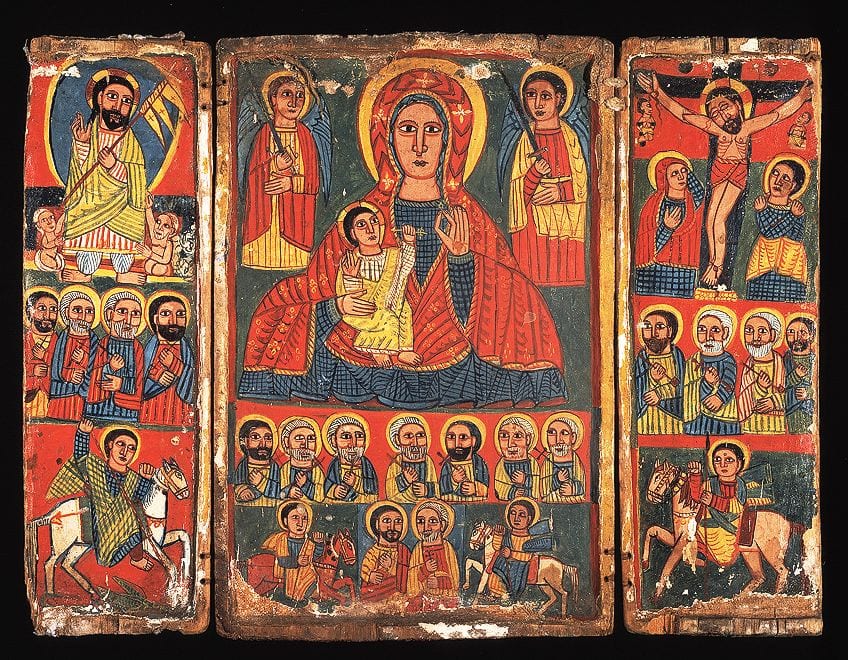
However, despite the many attempts to contain the truth, evidence of the extent of the famine soon leaked. Images began to circulate on flyers on the campuses of the Haile Selassie I University and unrest spread rapidly.
Eshetu Tiruneh (1952 – Present)
Among the students who saw these leaked flyers, were Eshetu Tiruneh, an art student at the University’s School of Fine Arts. For his final year work, in 1974, Eshetu Tiruneh painted a mural titled Victims of Famine. This mural is a bleak depiction of famished citizens, trekking through a barren landscape.
The people in the paintings were based on sketches that the artist did of many starving men, women, and children, giving them food in exchange for being able to draw them.
The onward movement of the starving people portrays a sense of dignity and strength, despite their suffering. What is so striking about this work, is that Tiruneh managed to capture the defiant and independent spirit of the Ethiopian nation.
The image is honest about the suffering of the people, but it does not show them begging or helplessly receiving aid from outside; rather, it shows them helping and supporting each other through their strife.
The Era of Communist Art
Whilst the country was suffering from starvation and drought, the emperor was seen throwing a lavish 80th birthday party for himself. The celebration was on the 23rd of July 1972 and is reported to have cost $35 million: an absurd amount of money, especially considering that it was spent on unwarranted luxuries during the Wollo famine.
Riots and protests started occurring throughout the country, and in February 1974, Haile Selassie was arrested by a militant coup and never seen again. His death was first reported to have been due to natural causes on the 27th of August 1975, but later evidence suggested that he was strangled. As imperialism was overthrown, communism rose.
The Tiglachin Monument
Communism transformed Ethiopian art. In Ethiopia, art students were sent to Moscow to be retrained to create work that mobilized the masses and supported communist ideals. An example of some of these works is a monument called the Tiglachin (Our Struggle) Memorial.
This is one of the only communist monuments that is still standing today. The monument stands in Addis Ababa and was constructed during the rule of Mengistu Haile Mariam.
It was unveiled on the tenth anniversary of the downfall of Emperor Haile Selassie, on the 12th of September 1984. The monument consists of a central sculpture of the soldiers that fought in the Ogaden War, and a tall 5m pillar with wall reliefs.

David Stanley from Nanaimo, Canada, CC BY 2.0, via Wikimedia Commons
One of these reliefs illustrates landlords and nobilities on horseback ignoring the pleads of starving peasants. On the other side, a new class of intellectuals is depicted. They are shown to be preaching communism as the solution to inequality. Images of people freed by the resolution are shown to be living in abundance, supported by the military.
The communist regime used social realism as a tool to create a new narrative for Ethiopia. This narrative was stipulated to artists and had to convey the equality and abundance under communist rule, and the only accepted works were like these seen in the reliefs of the Tiglachin Monument. The individualism that accompanied abstract and fine art was frowned upon, and all work was to speak to the masses and show the unification and equality of all citizens.

Art and reality, however, could not have been further apart. The communist regime was highly oppressive and between 1976 and 1978, in an era called the Red Terror, the Marxist government had killed an estimate of half a million citizens. The country suffered even greater poverty and people were even less prepared for the next famine. The famine from 1983 to 1985 is estimated to have killed over 1 million people in Ethiopia.
The Red Terror Memorial Museum was established in 2010 in Addis Ababa.
Contemporary Ethiopia
Communism was overthrown in 1991 and with a new democracy, Ethiopia started to regain its place in the world. The government had a newfound openness to art and embraced many different art forms and art movements.
The result was a thriving fashion and contemporary art scene. Today, the contemporary art scene of Ethiopia is one of the most vibrant and dynamic in the world.
The striking imagery that has come out of Ethiopia simultaneously responds to its past struggles, whilst honoring its ancient roots. One such artist whose work plays on this tension between the complex past and possible future of Ethiopia is the contemporary photographer and painter, Aida Muluneh.
Aida Muluneh (1974 – Present)
Aida Muluneh was born in Ethiopia in 1974. However, soon after her birth, her family was exiled, and she was forced to leave the country at the age of five. Muluneh spent the rest of her childhood between Yemen and England, followed by several schooling years in Cyprus, after which she settled in Canada in 1985. After some years, she relocated again in the pursuit of a degree in Film from Howard University in Washington DC.
When she obtained her degree, she decided to stay a while longer to work some years as a photojournalist for the Washington Post. Aida Muluneh finally returned to Ethiopia in 2007.
Aida Muluneh is now the founder and director of the Addis Foto Fest (AFF), hosted biannually in Addis Ababa. The AFF is the first international photography festival in Eastern Africa. Muluneh continues to teach and has established a company in Addis Ababa, called DESTA (Developing and Educating Society Through Art).
Muluneh’s photos have won numerous prestigious international awards and in 2019, she became the first black woman to co-curate the Nobel Peace Prize exhibition.
The World is 9 (2016)
The World is 9 is a photographic series by Adia Muluneh, completed in 2016. The title of the series is inspired by the artist’s grandmother, who used to tell her, “The world is 9, it is never complete and it’s never perfect”. These worlds remained with Muluneh, and in this series of works, she considers life as something imperfect and unpredictable.
She is saying that life will never be without challenges and that we must face these challenges with strength and devotion.
This message comes through in the title of one of the works in this series, namely Strength in Honor (2016). In this photograph, you see a defined silhouette of a woman. She looks strong, proud, and sure of herself. The vivid use of primary colors reasserts her strength and reminds us of the early Christian Ethiopian paintings.
Muluneh describes this style as “Afrofuturism”, a mix of traditional culture and future ideals.
The works also show African body painting, inspired by the traditional body art used across Africa. You can see this body painting and the powerful use of primary colors again in her from the same series, titled City Life (2016). In this image, an African woman is looking straight at the viewer, her gaze is strong and defiant. Read also our african art blog post.
The background of the work is a tribute to Africa and the colorful symbolism of the black diaspora.
Book Recommendations
There are not many books available that encompass the diversity and range of Ethiopian Arts over the centuries. However, there are a few that will give you more insight into some of the aspects discussed in this article. To read more about the history and Ethiopian art culture, we suggest the following books.
The Shadow King: A Novel (2020) by Maaza Mengiste
This book was shortlisted for the 2020 Booker Prize and was named the best book of the year by the New York Times, Elle, Time, and more. While the book is not for the faint of heart, it is absolutely worth the read if you want to get an insider’s perspective into the Italian’s second invasion of Ethiopia. The book is a historical fiction narrative, written from the perspective of a female soldier fighting in this war. While this book is not focused on Ethiopian Artwork directly, it paints the picture of the historical background that informs the work of many Ethiopian Artists.
- Shortlisted for the 2020 Booker Prize
- Fiction book that narrates the invasion of Ethiopia
- Casts light on female soldiers left out of the historical record
Ancient African Kingdoms: A Captivating Guide to Civilizations of Ancient Africa Such as the Land of Punt, Carthage, the Kingdom of Aksum, the Mali Empire, and the Kingdom of Kush (2020) by Captivating History
This book not only will expand your understanding of ancient Ethiopia (then called the Kingdom of Aksum), but it will also introduce other ancient African kingdoms! You can get this captivating read as a hardcover, on Kindle, or as an audiobook!
- Two captivating manuscripts in one book
- An exceptional guide to ancient African civilizations
- Covers an incredibly diverse range of topics about ancient Africa
Ethiopian Art: The Walters Art Museum (2006) by Gary Vikan
The Walters Art Museum has the largest collection of Ethiopian artwork outside of Ethiopia. This book is a beautiful catalog of the works in their possession, focused on the Christian Ethiopian artworks and artifacts, including metalwork, painted icons, processional crosses, and painted manuscripts.
- Celebrates the art of the Christian kingdom of Ethiopia
- Reveals a vibrant artistic world of color, ritual, and spirituality
- Details largest collection of Ethiopian art at The Walters Art Museum
Aida Muluneh is only one of the hundreds of artists whose works reflect the exciting and dynamic contemporary art scene in Ethiopia. This article explored selected parts of Ethiopia’s diverse and rich cultural history and showed the determination of its proud people. From ancient greatness to modern struggle, Ethiopia defeated its dark ages of famine, war, and social instability, and retained its independence throughout its long history. With its strongly defined cultural traditions and fresh look onto the future, Ethiopia finally stepped into the spotlight of the world’s stage.
Frequently Asked Questions
What Is the Meaning of the Aksum Obelisk?
The Axum obelisk tells a story of the history of Aksum, which is steeped in war and resilience. It is at once a memorial for loss and a symbol of hope and power.
What Do Ethiopian Christians Believe In?
Orthodox Ethiopian Christians, whilst they have unique rituals, believe the same as all other Christians. That is, they believe in the Holy Trinity. Ethiopian Christians also value the ritual of the Feast of Epiphany very highly, and it is one of their most important religious celebrations.
What Type of Art Is Popular in Ethiopia?
In Ethiopia, art that is popular ranges from early Christian art, seen in manuscripts, murals, and artifacts, through to modern art movements, such as realism, expressionism, and world-class contemporary art.
Chrisél Attewell (b. 1994) is a multidisciplinary artist from South Africa. Her work is research-driven and experimental. Inspired by current socio-ecological concerns, Attewell’s work explores the nuances in people’s connection to the Earth, to other species, and to each other. She works with various mediums, including installation, sculpture, photography, and painting, and prefers natural materials, such as hemp canvas, oil paint, glass, clay, and stone.
She received her BAFA (Fine Arts, Cum Laude) from the University of Pretoria in 2016 and is currently pursuing her MA in Visual Arts at the University of Johannesburg. Her work has been represented locally and internationally in numerous exhibitions, residencies, and art fairs. Attewell was selected as a Sasol New Signatures finalist (2016, 2017) and a Top 100 finalist for the ABSA L’Atelier (2018). Attewell was selected as a 2018 recipient of the Young Female Residency Award, founded by Benon Lutaaya.
Her work was showcased at the 2019 and 2022 Contemporary Istanbul with Berman Contemporary and her latest solo exhibition, titled Sociogenesis: Resilience under Fire, curated by Els van Mourik, was exhibited in 2020 at Berman Contemporary in Johannesburg. Attewell also exhibited at the main section of the 2022 Investec Cape Town Art Fair.
Learn more about Chrisél Attwell and the Art in Context Team.
Cite this Article
Chrisél, Attewell, “Ethiopian Art – An Exploration of Ancient Ethiopian Art and Culture.” Art in Context. March 9, 2022. URL: https://artincontext.org/ethiopian-art/
Attewell, C. (2022, 9 March). Ethiopian Art – An Exploration of Ancient Ethiopian Art and Culture. Art in Context. https://artincontext.org/ethiopian-art/
Attewell, Chrisél. “Ethiopian Art – An Exploration of Ancient Ethiopian Art and Culture.” Art in Context, March 9, 2022. https://artincontext.org/ethiopian-art/.







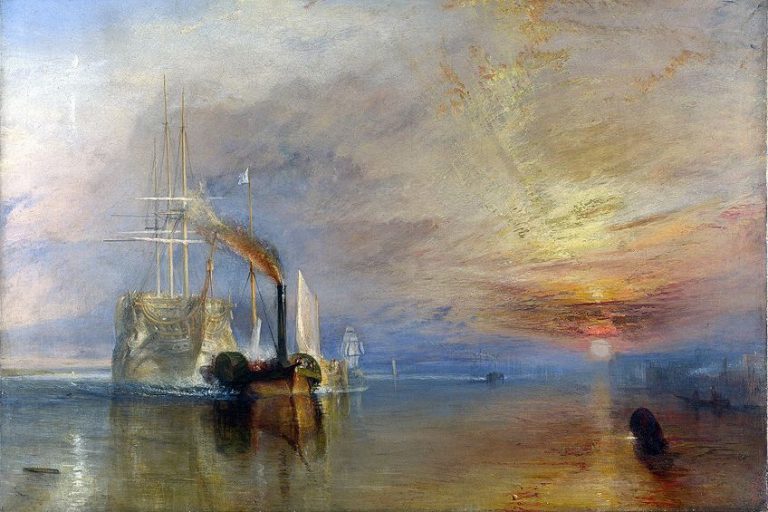


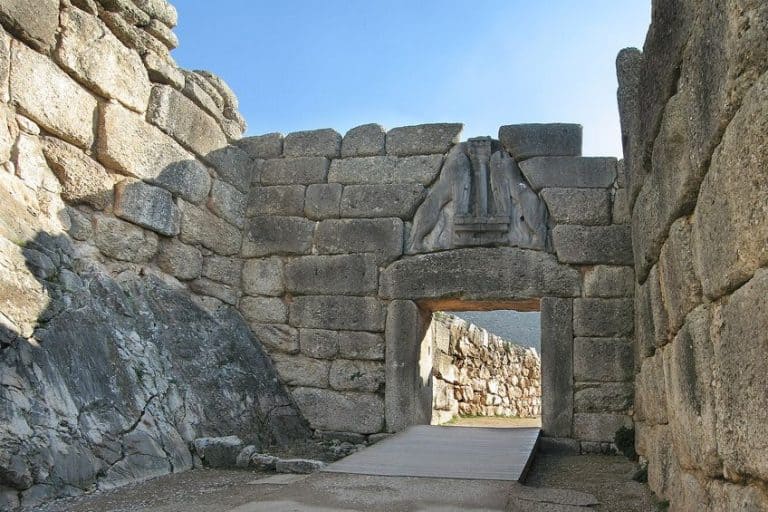
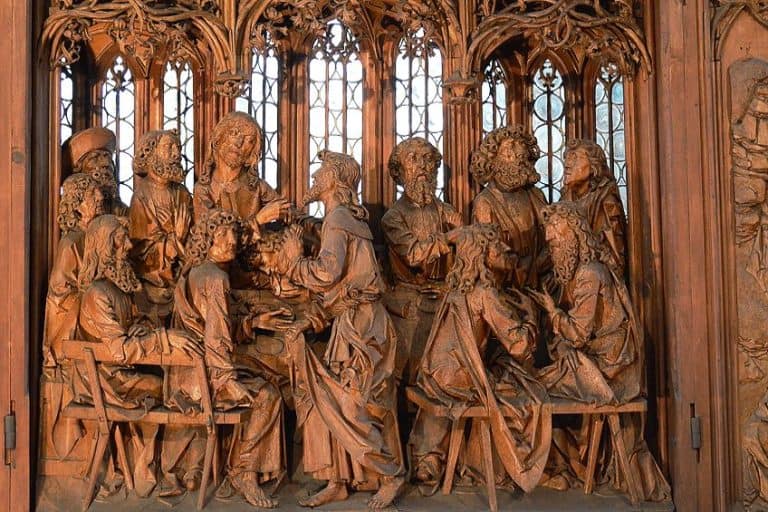
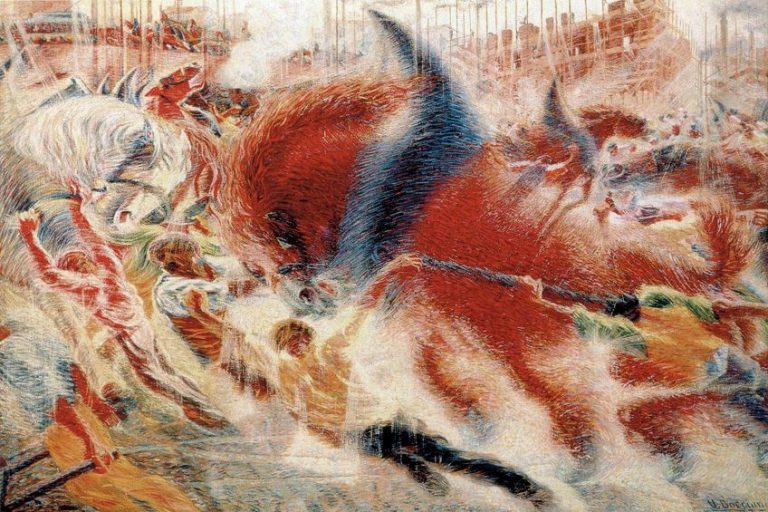


I have a nice tryptic of St Haymanot that must be very old, it guards our staircase. My aunt bought it many years ago in Africa.
I’d post a pic but your site doesn’t allow for that.
Hi J Peterson, that sounds interesting, feel free to send a picture via e-mail.